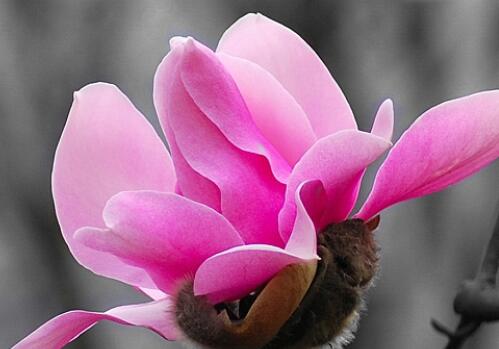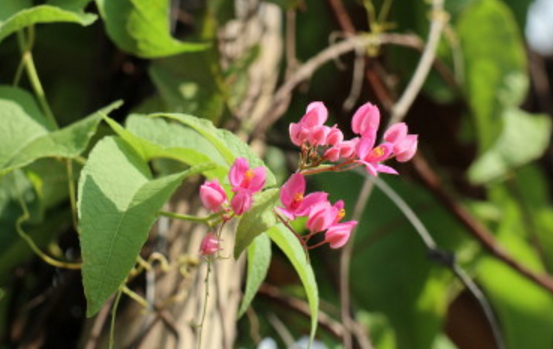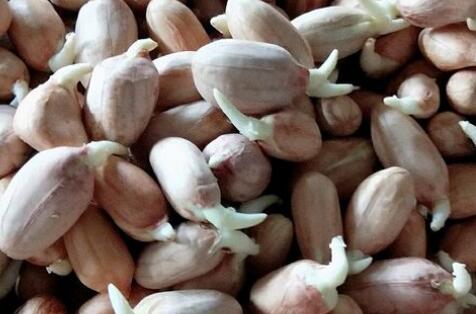When does deciduous Arbor Xinyi Flower (Magnolia) usually be planted and harvested? When will it blossom? How long is the florescence? Cultivation technique
Xinyi flower (Magnolia) has high ornamental value and is an ideal flower pattern for beautifying the courtyard. Alias Magnolia, Wangchun, Magnolia. When does Magnolia usually be planted and harvested? When will it blossom? How long is the florescence? What are the cultivation techniques? According to the information of Magnoliaceae, Xinyi flower is also called Wangchunhua, magnolia, which usually blossoms in early spring in March, with a florescence of about 10 days.

When do Xinyi flowers (magnolia) usually be planted and harvested?
Planting:
1. The sowing time of Xinyi flower can generally be carried out in the middle and late February, no later than Qingming Festival at the latest. Of course, because of the differences in climate across the country, the temperature after the Spring Festival is also high and low, such as South China and other southern regions can be advanced, North China, Northeast and other northern regions need to be postponed. Specific sowing time, or to refer to the local climate.
2. Split propagation: before and after the Beginning of Spring, dig up the roots and seedlings of the old plant and plant them separately. Watering to preserve soil moisture, in order to survive.
3. Cutting propagation: in summer.
Harvest:
1. Xinyi flowers are generally harvested when they are in bud, and the petals are not easy to fall off and have a strong fragrance.
2. Flos Magnoliae didn't blossom until 5-7 years after transplanting. Unopened buds are usually collected from December to February of the following year. After drying the collected buds, they can be sold. The average yield per mu is 150-250 kg.
What are the cultivation techniques of Xinyi flower?
1. Xinyi flowers like warm climate and sunny environment. It is slightly hardy and can survive the winter in the open field at-15 ℃. Soil requirements are not strict, barren mountains, houses in front of the house, both sides of the road, both sides of the river, can be cultivated, with deep soil layer, loose fat jacket sandy loam cultivation is better. Low-lying land, heavy clay and saline-alkali land are not suitable for cultivation.
2. Select fields with high terrain and good drainage, and cultivate them carefully. Combined with soil preparation, apply sufficient basic fertilizer: 300 kg of soil miscellaneous fertilizer, 20 kg of urea and 50 kg of phosphorus and potassium fertilizer per mu. Then make a high bed 1.5 meters wide and wait for sowing.
3. Xinyi flower is propagated by seed. It can also be propagated by cutting, ramet and grafting.
(1) seed reproduction: before sowing, the collected seeds are mixed with coarse sand and rubbed repeatedly to remove the red fleshy skin. Then carry out sand storage: mix the seeds with wet sand at 1:3, spread them evenly in a pre-dug pit, cover them with weeds and maintain humidity. When the seeds are white in the next spring, they can be sowed into the whole border according to the row spacing of 25 cm, and water to preserve soil moisture to facilitate survival. After the seedlings are collected, the field management should be strengthened, and after 1-2 years of cultivation, they can be transplanted.
(2) Cuttage propagation: in summer, select 1-2-year-old strong twigs, take the lower part, cut into 20 cm long cuttings, each segment should have 2-3 nodes. The lower end is cut into a horseear-shaped slope, each 50 into a bundle, and the lower part is immersed in 500ppm rooting powder solution for 15 seconds, then it can be inserted into the whole border surface according to the row spacing of 20 × 7 cm, and water is watered to preserve soil moisture in order to survive. After the seedlings are collected, the field management should be strengthened, and after 1-2 years of cultivation, they can be transplanted.
(3) ramet propagation: before and after the Beginning of Spring, dig up the root seedlings of the old plant and plant them separately. Watering to preserve soil moisture, in order to survive.
(4) grafting propagation: the rootstock uses 1-2-year-old seedlings of Magnolia or Magnolia, and the scion uses 1-year-old branches from the flowering and fruiting mother plant. In late May, slightly with xylem, bud grafting or T-shaped bud grafting, the survival rate of grafting is high at 2-5 p.m. Unbind the rope after survival. After the new buds grow, cut and paste, erase the rootstock buds, and manage them. Grafting propagation is the main way for Magnolia to produce prematurely and prolifically. Transplanting: in spring and autumn, Xinyi seedlings were planted on the whole border surface according to the row spacing of 3 × 2 meters, and watered to preserve soil moisture in order to survive.
4. After Magnolia officinalis seedlings or transplanting, attention should be paid to ploughing and weeding. Timely watering in dry weather and immediate drainage in cloudy and rainy weather. After transplanting, topdressing twice a year. Before germination in spring for the first time, 25 kg of urea and 50 kg of phosphorus and potassium fertilizer were applied per mu. The second time in winter, sprinkle a layer of soil and miscellaneous fertilizer on the border. In order to increase income, in previous years, appropriate intercropping of some annual crops such as melons and fruits, vegetables, medicinal herbs, and so on, to achieve the goal of short-term growth. In the process of magnolia growth, it is also necessary to prune the Xinyi tree into a high-yielding tree with open stratification or natural happy shape.
5. The disease of Xinyi flower is less, if found, it can be controlled by conventional methods. The main pests are diamondback moth, diamondback moth and wood cysticercus. Phoxim 500 times solution combined with permethrin spray was used to control.
Time: 2019-03-17 Click:
- Prev

How to raise the coral vine balcony of Polygonaceae? What about the withered and yellow leaves of the seedlings? What's the use?
Coral vine is eye-catching and spectacular, it is a good plant for garden and vertical greening, and it is also one of the flowers with ornamental value, so how to raise coral vine balcony? What about the withered and yellow leaves of the seedlings? What's the use? According to information, coral vines like a humid environment, so they should be fully watered during their growth. Keep the soil moist
- Next

When will summer peanuts be sown? What are the high-yield planting techniques?
Summer peanut has become the first choice of many growers because of its high economic benefits, easy cultivation and management, conducive to land recycling and other advantages. When will summer peanuts be sown? What are the high-yield planting techniques? When will summer peanuts be sown? Summer peanuts usually sow peanuts after wheat harvest.
Related
- Fuxing push coffee new agricultural production and marketing class: lack of small-scale processing plants
- Jujube rice field leisure farm deep ploughing Yilan for five years to create a space for organic food and play
- Nongyu Farm-A trial of organic papaya for brave women with advanced technology
- Four points for attention in the prevention and control of diseases and insect pests of edible fungi
- How to add nutrient solution to Edible Fungi
- Is there any good way to control edible fungus mites?
- Open Inoculation Technology of Edible Fungi
- Is there any clever way to use fertilizer for edible fungus in winter?
- What agents are used to kill the pathogens of edible fungi in the mushroom shed?
- Rapid drying of Edible Fungi

